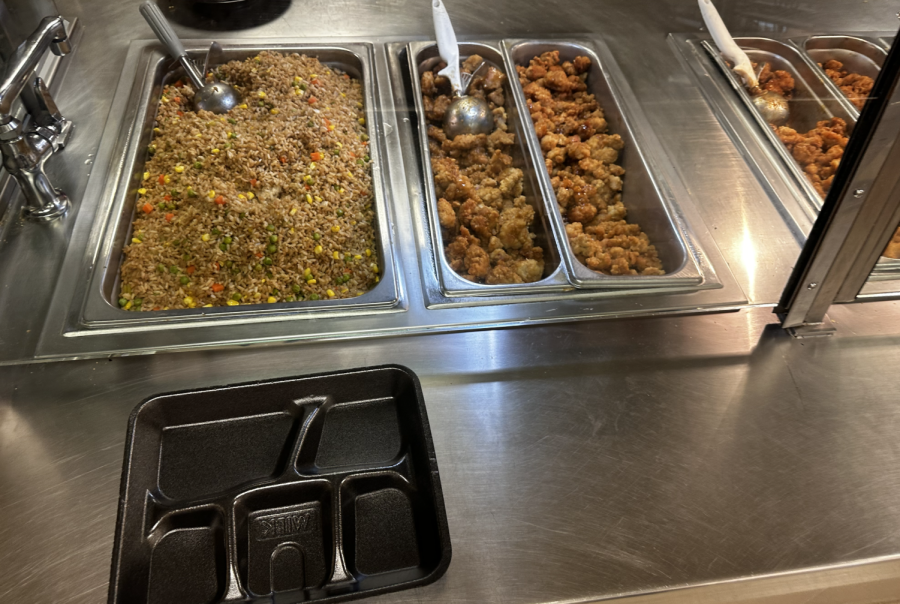Watching the Waste
MISD has programs in place to limit the amount of food waste they must discard at the end of the day.
Black styrofoam trays thump onto linoleum cafeteria tables as students get ready to dive into their lunch. This is a typical scene throughout almost any American school. Students wait in line, get their food, eat their food, and throw away their trays. What many don’t consider, though, are the leftovers that remain on those trays as they are discarded.
In a 2019 report, K-12 Dive, an education news organization, disclosed that an estimated 530,000 tons of food gets wasted across the states annually. While Mansfield ISD does contribute to this statistic, the district works to prevent excessive food waste with careful planning and organization. As of the 2022-23 school year, approximately 20,000 school lunches and 6,000 breakfasts are being put out.
Mansfield ISDs Executive Director of Student Nutrition, Rita Denton, works with her team to ensure that as little food as possible gets thrown away. Instead of preparing the day’s food all at once, chefs are told to cook it in batches. This not only helps minimize waste, but it ensures that all students have the opportunity to enjoy a fresh lunch no matter what time they get their food. The cooks also incorporate batches of leftovers into the next meal they cook for students, by turning one days toast into the next day’s croutons for a hearty salad. With this kind of instruction and training, the cafeteria staff directly affects how much food is, or isn’t, wasted.
“We do a really good job at minimizing food waste. My managers are trained very thoroughly on their planning, shopping, and production. Every single lunch personnel is trained to follow recipes carefully. It certainly takes highly trained individuals as far as the workforce, people who care,” Denton said.
Denton also pays attention to the consumer’s opinion. She makes sure that students enjoy and consume the meals prepared for them at school. They communicate with students and parents alike to learn preferences and even run “taste parties” from time to time. These parties consist of Denton and her team visiting schools with various food samples for students and using the feedback to cater to their likes and dislikes. Incorporating the students [preferences] into the meal plan, instead of simply creating a balanced diet for the day, ensures that people will actually eat the food served.
“We put together a lot of different samples and we let the students try them and give us feedback, if they would like to see it on the menu, if they wouldn’t, etc. One time we even had a vegetarian and vegan party and invited vegetarian and vegan students to come and try out a lot of different entree options. It was a lot of fun. We’re all passionate about reducing food waste. We’re really happy to bring high quality foods to our students, and we would just love to get menu feedback so we can continue to adapt our menus accordingly,” said Denton.
Principal, Ashley Alloway, believes that by providing students with more and more options for lunch, food waste has been reduced.
“I think by giving you guys a choice in some of the things you want, we do avoid it. Giving you multiple options or three or four different lines kind of, I think, helps minimize,” said Alloway.
Lake Ridge’s cafeteria manager, Michelle Myrow, uses instruction from Denton to serve healthy and fulfilling lunches to students on campus. Myrow’s biggest concern is making sure students have good food choices. This is why her system consists of cycling through fresh food so all students have a chance at eating good. In doing so, food inevitably gets wasted.
“Our philosophy is, the first student that comes through the door, the last student gets the same food choices as them. So with doing that I have to keep extra food. We try to keep it down to maybe 10 to 15 of each item left at the end of the day, and it gets thrown away,” Myrow said.
Balancing between enough food for students and keeping waste to a minimum is difficult, but Denton, Myrow, and many other figures throughout the district work together to reduce food waste every year.
“It just kills us some days to throw that food away,” said Myrow. “But, it is our job and it is what we’re told to do. If we could find somewhere that this food could be of use that would be just wonderful but I don’t guess there is any right now.”


